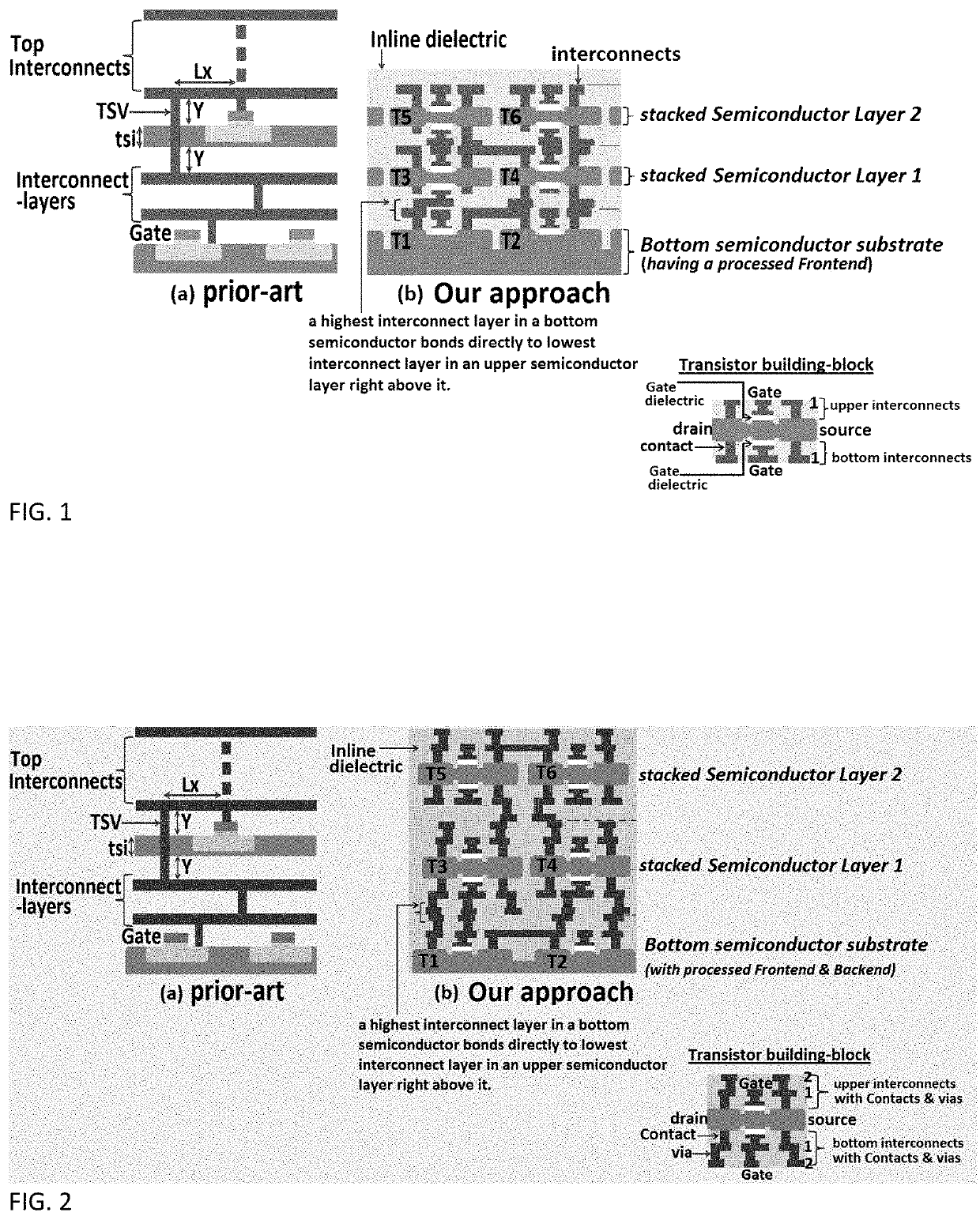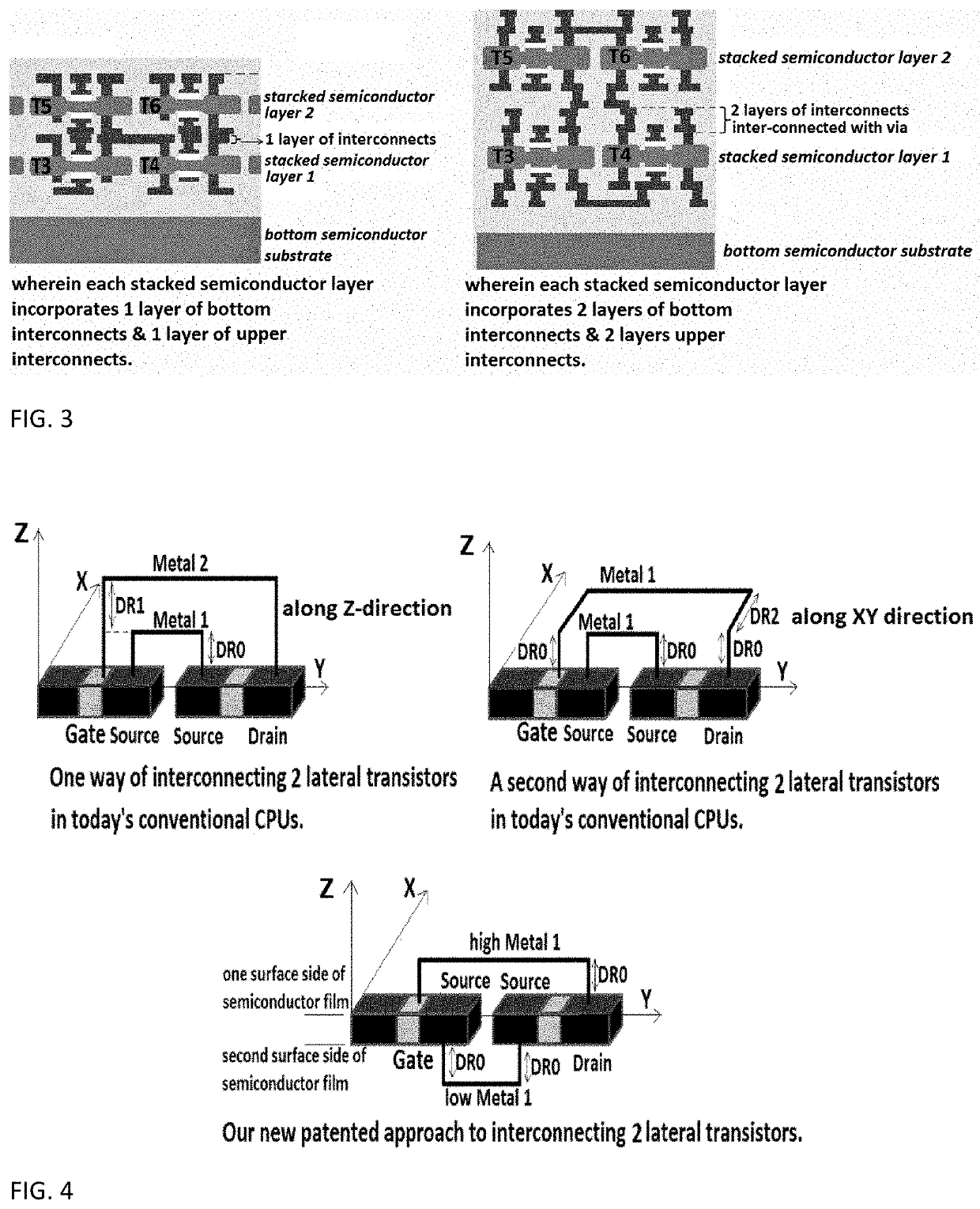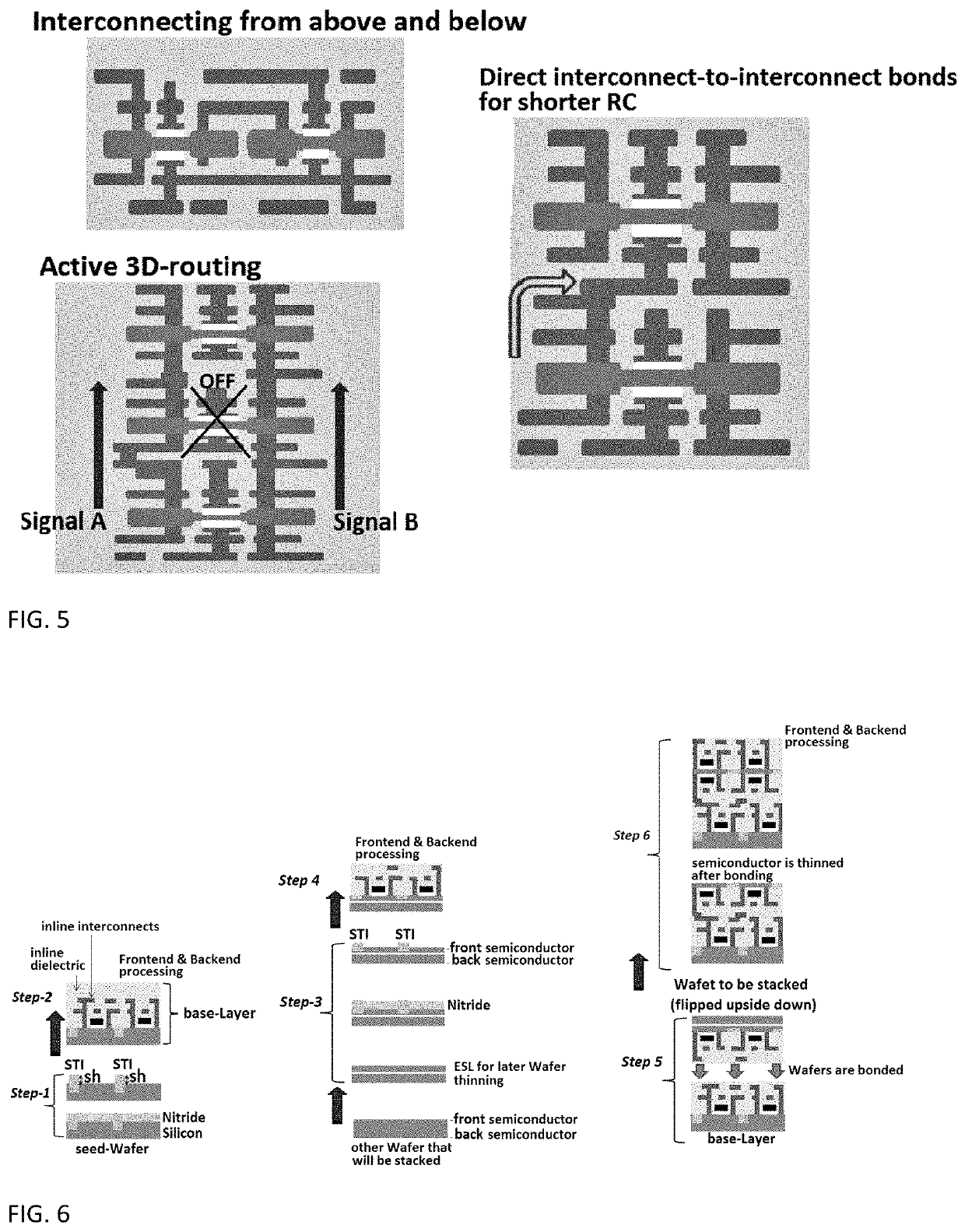Approach to the manufacturing of monolithic 3-dimensional high-rise integrated-circuits with vertically-stacked double-sided fully-depleted silicon-on-insulator transistors
a technology of silicon-on-insulator transistors and integrated circuits, which is applied in the direction of semiconductor devices, semiconductor/solid-state device details, electrical apparatus, etc., can solve the problems of limiting volume of tsvs, and achieve the optimization of power consumption for given performance, reduce parasitic power consumption, and reduce on-state performance
- Summary
- Abstract
- Description
- Claims
- Application Information
AI Technical Summary
Benefits of technology
Problems solved by technology
Method used
Image
Examples
Embodiment Construction
[0016]FIG. 1, FIG. 2 and FIG. 3 show a side-by-side comparison between the prior-art to monolithic 3D-ICs that is being considered and evaluated today, and our new-approach that eliminates the TSVs. Our new-approach is shown to include four transistors: T1, T2, T3, and T4, wired to each other in a dielectric through inline interconnects. The transistor's Drain and Source regions in our new-approach to monolithic 3D-IC architecture encompass or cover the many surface sides of the thinned semiconductor films that are exposed to the inline dielectric. This enables a Drain or a Source of one transistor to contact the terminal(s) (Drain, Source, Gate) of another transistor with shortest possible path(s) and without having interconnect(s) go around either of the two transistors like in the case of prior-art which representative schematic is shown next to the representative schematic of our new-approach. This significantly reduces delays and power consumptions in interconnects. When dual-G...
PUM
| Property | Measurement | Unit |
|---|---|---|
| Gate length | aaaaa | aaaaa |
| thickness | aaaaa | aaaaa |
| thickness | aaaaa | aaaaa |
Abstract
Description
Claims
Application Information
 Login to View More
Login to View More - R&D
- Intellectual Property
- Life Sciences
- Materials
- Tech Scout
- Unparalleled Data Quality
- Higher Quality Content
- 60% Fewer Hallucinations
Browse by: Latest US Patents, China's latest patents, Technical Efficacy Thesaurus, Application Domain, Technology Topic, Popular Technical Reports.
© 2025 PatSnap. All rights reserved.Legal|Privacy policy|Modern Slavery Act Transparency Statement|Sitemap|About US| Contact US: help@patsnap.com



